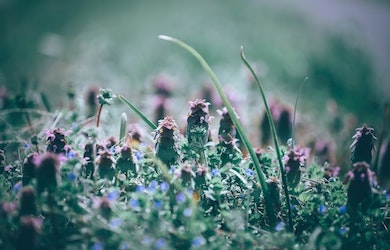Plastic bags start out as fossil fuels and end up as deadly waste in landfills and the ocean. Animals such as birds, turtles and whales mistake plastic bags for food and end up eating them. Unable to digest the plastic, these animals then die. If these animals are then eaten by another animal, such as a shark, then the plastic from their stomachs is then passed to the shark, who will also be unable to digest the plastic and will die. Tons of micro-plastics are also released into the oceans and landfill every day, which make their way into our food and subsequently, our bloodstreams.
Carrier Bag Facts You Might Not Know:
- 160,000 plastic bags are used globally every second.
- 5 trillion plastic bags are produced yearly.
- Plastic bags are produced using petroleum.
- It’s expected that there will be more plastic than fish in the sea by 2050.
- It is estimated that globally, people consume the equivalent of a credit card of plastic every week.
- Plastic bags are used for an average of 12 minutes but can last for more than 500 years.
- Only 9% of all plastic produced is recycled. [1]
Solutions so Far
Although there are things such as bags for life, that you can use “for life”, these regularly tear or a handle breaks after a while, or compostable bags, which can’t carry a heavy load, they are not the solution to the plastic bags crisis as they still end up in oceans and landfill, harming our wildlife and ending up in our food and bodies. You could use tote bags, which are material, but these generally tend to be a lot smaller and although they are fairly strong and unlikely to break, you’d need to double the amount of them to carry all of your shopping. Hessian bags are also a thing, they are bigger, stronger and more durable, but they cost more and still have plastic lining that breaks and ends up in landfill. They will then take about 2-3 years to decompose.
Cassava Dissolvable Carrier Bags
An Australian start-up company, called Cassava Bags thinks they have found the solution to the plastic bags crisis. They have created a dissolvable carrier bag that dissolves in hot water in under 60 seconds and will compost in 6-8 months. Cassava Bags dissolvable solution won the first prize of £200,000 at Bupa’s eco-Disruptive Live event for start-ups developing green technologies.
These bags contain no plastic whatsoever. They are made from starches of the Cassava plant. When these bags break down, there are no microplastics or toxins released into our oceans/landfills. The Co-founder said that it will take approximately 5 days to dissolve in the ocean, but the bags won’t dissolve in the rain, which means that you can safely transport your shopping from the shop to your car without the bag breaking, which is what tends to happen with paper bags.
This means that you could either, reuse your Cassava Bags until they break, or you could use them to take your shopping home, and once they are empty, dissolve them in boiling water and safely pour the water down the drain knowing that it won’t be contaminating anything and won’t end up in our food and back into our homes in a different form.
They are also developing various other products, including straws, takeaway containers, and cutlery. Cassava Bags have also formed a partnership with WWF to access expert guidance and advice on sustainability issues, as well as cutting-edge research and resources which they will utilise to achieve their sustainability goals.[2]
What is a Cassava Plant?
Cassava plant is a woody root vegetable, native to South America, from Brazil and parts of the Andes. Although a perennial plant, cassava is extensively cultivated as an annual crop in tropical and subtropical regions for its edible starchy root tuber, a major source of carbohydrates. Cassava is predominantly consumed in boiled form, but substantial quantities are used to extract cassava starch, called tapioca, which is used for food, animal feed, and industrial purposes. [3]
Image of a cassava plant root. [4]
Facts About the Cassava Plant:
- 303 million tonnes of cassava are grown annually.
- It is a resilient crop that can tolerate drought, poor soil, and high temperatures.
- It is a nutty-flavoured, starchy root vegetable – similar to a potato.
- It has other popular names such as Brazilian arrowroot, tapioca, and yuca in other parts of the world.
- Cassava should never be eaten raw as it contains harmful toxins that are concentrated on the outer layer of the cassava skin, once cooked, it is safe.
About Pager Power
Pager Power undertakes technical assessments for developers of renewable energy projects and tall buildings worldwide. For more information about what we do, please get in touch.
References
[1] https://www.biologicaldiversity.org/plastic_bag_facts
[2] https://cassavabagsaustralia.com.au/
[3] https://en.wikipedia.org/wiki/Cassava
[4] Image of Cassava plant root. Photo credit: Zudi Susanto (2014) from Flicker. Image accessed 26/09/2023. Available at: https://www.flickr.com/photos/cassavaplant




